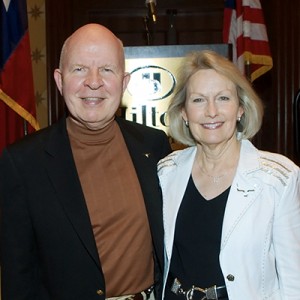History of NISOD
In the 1960s and 1970s, community colleges were proliferating and establishing themselves as major players in their local communities. They were engaged partners in economic development that earned reputations as game-changers. Students flocked to their doors for opportunities to change their lives for the better, and with them came challenges of extraordinary student diversity and increasing demands for services.
While they adeptly stepped up to these challenges, community colleges essentially stepped up in isolation. There was no widespread, organized strategy for sharing new ideas for improving teaching and learning. Hence, the market niche for a dissemination strategy was born of this developing need—a way to showcase and disseminate best practices among practitioners in the field. Many community colleges implemented their own staff and professional development programs. However, there was an argument to be made for finding a better way to share useful information with the field, for avoiding reinventing the wheel, and for exciting faculty about teaching innovations.

Dr. John Edward Roueche and Dr. Suanne Davis Roueche
In 1978, at the American Association of Community Colleges’ annual conference, the idea of identifying best teaching practices and disseminating these practices in print to community colleges across the nation was born. A W.K. Kellogg Foundation Program Officer asked, “What are you doing to disseminate good practices to the field?” John Roueche, then Director of The University of Texas’ Community College Leadership Program, agreed that while useful information was available, practitioners’ time to delve into published research reports was likely limited, no matter how creatively the reports were prepared. NISOD was conceived conceptually and sketched out graphically on a paper napkin during a breakfast meeting as a means to identify and disseminate best teaching practices to community college practitioners.
Following AACC’s annual conference, the goals of (a) taking advantage of the limited time faculty have to research new ideas and (b) supporting their interests with information about best practices were shaped into an actual business plan. The plan was to birth a membership organization for the primary purpose of disseminating solicited information about practitioners’ best practices to the field, beginning with Innovation Abstracts, a two-sided page that could be read in fewer than 10 minutes. Innovation Abstracts, written by and for practitioners, were originally disseminated weekly in print—and later online as the technology developed—to member colleges around the globe. Other publications were eventually added that showcased remarks from popular conference presenters, as well as ways in which technology changed life on college campuses and in classrooms.
NISOD’s annual international conference remained the flagship of its professional development activities. The month of May became synonymous with traveling to Austin for four days of conference activities—a fitting end to another successful academic year. In time, corporate and other partners began participating in the conference by identifying pressing issues facing community colleges, designing unique strategies to address those issues, and disseminating their offerings to member colleges. The conference’s popular Mexican food buffet and dancing to live country western music became signature pieces, successfully encouraging faculty and administrators to leave their comfort zones and enjoy a night with colleagues and friends.
NISOD further enhanced the conference with the NISOD Excellence Awards, an annual recognition of individuals nominated by their colleges for stellar performance. Each award recipient received a teaching medallion to proudly wear during the conference and to take home to wear during their colleges’ celebrations. The Excellence Awards video showcasing award recipients was consistently a defining moment of the conference. From the serious to the hilarious, the video’s visual snippets provided potent reminders of why faculty do what they do.
NISOD’s Leadership Award annually recognized a single individual whose vision and strategic implementations forever changed the teaching and learning landscape of their college specifically and all colleges in general. This award was ultimately renamed the John E. Roueche International Leadership Award.
Friends, colleagues, and the Roueches established the Suanne Davis Roueche Endowment to support general conference costs and individual keynote speakers. Selected keynote speakers were recognized as Suanne Davis Roueche Distinguished Lecturers.
NISOD focused on the three Rs—relationships, resources, and recognition. Membership grew from an initial 51 colleges to more than 500, and conference participants grew from 152 to more than 2,200. The membership fee remained a conservative cost for the expanding collection of popular faculty, administrator, and staff professional development activities.
NISOD’s proud history of encouraging and supporting excitement about best practices and innovation is played out on the rich tapestry of successful human ventures, singularly and collectively. The novel idea of disseminating valuable practitioner-designed teaching and learning best practices across the community college landscape in accessible and useful formats came to life in 1978. As history has recorded, this idea was just a few conversations away from being realized and was the beginning of a remarkable journey.
NISOD’s primary mission—to engage learners on all sides of the higher education table—continues in full strength.
Note: This historical overview was compiled by Dr. Suanne Davis Roueche, NISOD director, 1985-2000, to whom NISOD owes a special thanks.

